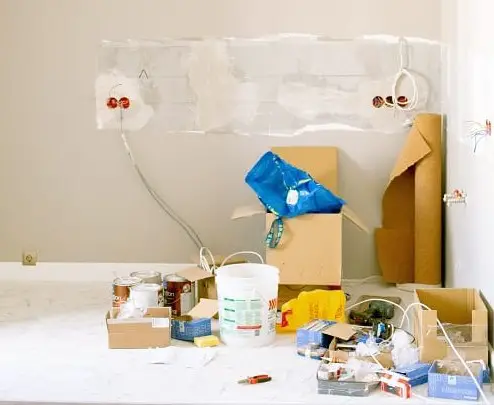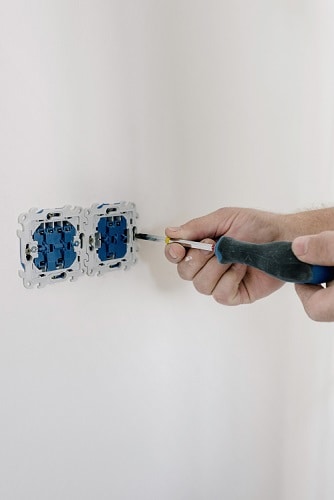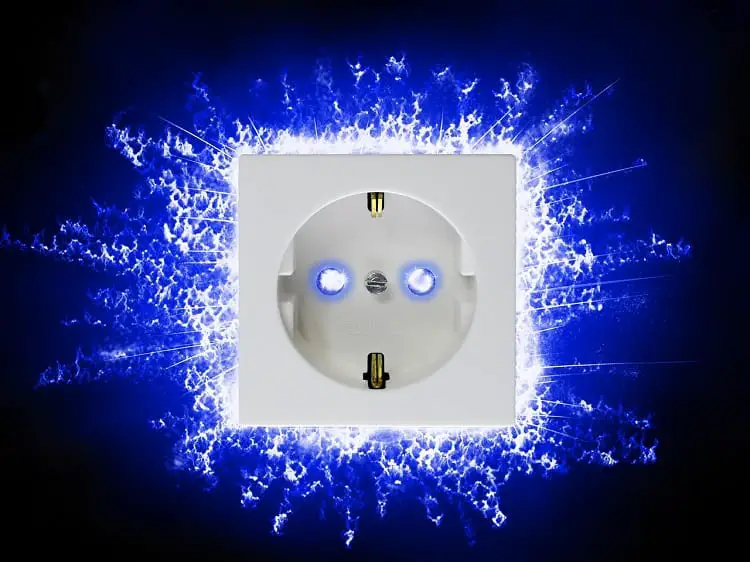It’s time for a new and updated look for your home. This article on how to paint electrical outlets will show you the way if you’re tired of glaring white and brown outlets.
When painting an outlet, start by removing the receptacle. Then, mask off everything except the switch portion of the outlet. Next, mix up some painter’s tape and prime your paint surface to ensure you have a nice, even surface to receive your topcoat. The next step is where most people go wrong. Always ensure you use 100% flat paint (also known as no gloss).
Painting your walls is a great way to improve your home’s aesthetics and bring a new feel to your living space.
You’ve got your paint ready, won your overalls, and covered the floor with newspapers, but you don’t know whether it’s safe to paint your electrical outlets.
You can paint them, but there is the risk that the paint may get inside, which may lead to a short circuit and probably a fire outbreak.
When painting your electrical outlets, be very mindful to paint only on the outside and make sure that your brush is not dripping with paint when painting the electrical outlets.
Better safe than sorry, so you can opt to buy new electrical outlets that have a similar colour to your paint.
This may prove quite expensive as you must buy the whole house.
So, if you don’t have the funds, you can use the following tips when painting your electrical outlets, but first, let’s explore why it’s not advisable to paint them.
Read More How To Paint A Room |DIY Pro Tips
Why is it not advisable to paint electrical outlets

Although you can paint electrical outlets, you’ve to be extremely careful with the paint not to contact wires.
This is because most paints are electrically conductive, meaning you are at risk of starting a fire.
Primarily, it causes a short circuit. And if you’ve connected any device to the socket, it connects and disconnects about hundreds in one minute. And finally, it is destroyed due to power overload.
So, when painting your electrical outlets, ensure you’ve removed all the plugged things to prevent them from getting destroyed.
Also, it would be best to turn the power off at the main switch.
You should also make a point of using non-conductive paint. Avoid painting the receptacles and use the roller instead of a brush.
How to Paint Electrical Outlets Covers So They Stand Out In 7 Simple Steps.

As I’ve explained above, avoid painting the receptacle; it’d best to use non-conductive paint to minimize the risks.
Apart from using a roller, you can also use spray paint to ensure you are spot-spraying.
I’ve painted a few outlets in my day.
Painting electrical outlets isn’t rocket science, nor rocket surgery either.
It can be done in less than an hour if you have the right supplies, know what you’re doing, and are patient.
I will walk you through the process so your painting electrical outlets look as good as mine.
Before you embark on your painting, ensure you have the following items;
- Sand Paper
- Paintbrush
- Spray paint
- Cardboard
- Wall paint
- Flathead screwdriver
1. Unscrew the cover
You’d have to remove your switch plate cover by unscrewing it. Most covers are attached to the whole thing by screws.
Once you remove the screws, remove the cover with a sharp plastic tool.
Suppose screws do not hold together your cover; instead, it is attached using tabs; pop them using the non-conductive tool.
2. Clean the cover
Place it on top of a piece of cardboard and clean it.
Please leave it to dry completely; you can place it outside in direct sunlight.
If the cover has been in place for a long time, chances are it has some scratches; use sandpaper to smoothen the rough patches. A clean cover absorbs paint and has a shiny outlook, looking as good as new.
3. Apply primer
Afterwards, apply a primer, a shiny cream paint that allows the paint to last. When painting plastics, you must apply a primer; otherwise, you’ll be doing zero work, as the paint will peel off, which is used as an undercoat.
Let it rest for the primer to dry.
4. Apply paint
Then spray paint or paint with a brush. Apply a thin layer of paint to the entire cover. Let it dry, and repeat the process two more times. Doing several coats leaves your cover looking as good as new.
Related How Long To Wait Between Primer And Paint
5. Apply varnish
After the paint dries off, apply a finishing coat of varnish. Some people skip this step, but it protects your paint from flaking off, especially if the switching plate is in a position where it is under constant use.
Put it aside for it to dry.
6. Paint the slots
After you are done painting your cover, your switching plate has the slots, and while it’s risky, you’d have to paint them so that the whole socket is uniform.
Cut out a piece of cardboard or box and make a hole your socket’s size.
Use it to cover the outer areas and only remain with the socket slots. As we’ve said, ensure that the main switch is off. Take off your spray paint can and paint the slots.
To ensure no paint gets inside the slots, stuff some newspapers inside.
7. Screw the cover back
Remember to paint your screws. After they are all dry, screw back your cover, and Voila..! you have a brand new socket.
Read More Glow In The Dark Paint: How Long Does It Last
Some of the common mistakes people make when painting electrical sockets
- Not unscrewing the cover from the switching plates increases the chances of a short circuit.
- Not smoothing the rough patches like scratches with sandpaper will result in your results not being as neat or appealing as you had hoped.
- Failing to apply primer to the cover. So when you apply the paint, it peels off within a few days.
- Do not clean the cover to remove the dust before applying primer or paint.
- Applying the paint before the primer has dried off
- Applying paint while the cover is still attached to the wall.
Final Thoughts on How To Paint Electrical Outlets Safely
Painting your wall sockets is risky, but you have nothing to worry about if you follow the process detailed above.
Alternatively, you can buy new sockets in the colour you prefer as nowadays you can find them in any colour.
Now you know how to paint electrical outlets.
Remember always to be sure that it is unplugged and that all the paint has dried before plugging it back in. Good luck!
Have you ever painted your wall sockets? Did you follow the process explained above? If not, kindly share your process and any questions in the comment section.
